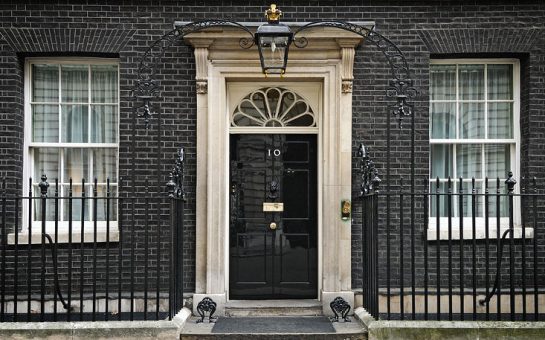Despite the high rise in non-EU immigration, the UK is still struggling to replace thousands of low-skilled EU workers who left the country after Brexit.
Since 2020, low- and medium-skilled sectors in which EU workers were overrepresented – including wholesale and retail, administration, accommodation and food, childcare – have registered a high number of unfilled jobs.
Under the post-Brexit immigration system, employers who primarily relied on EU-workers in these sectors, struggle to attract and recruit non-EU nationals who instead prefer skilled jobs in real estate, education, finance, communication and information.
According to Jonathan Portes and John Springford’s study on the early impact of the post-Brexit immigration system on the UK labour market, the end of free movement – an central issue of the Brexit campaign – led to a shortfall of around 330,000 EU workers in less-skilled sectors.
Prof. Springford explained: “We found that the losses of EU workers were really concentrated in low-skilled sectors and some of the impacts in some sectors were really quite big!
“These are the sectors where we saw quite a lot of workers coming in during the 2010s often from central Europe but also from southern Europe.”
Their estimates suggests that by June 2022, very large shortfalls of workers were registered in transportation and storage – with a loss of around 126,000 workers (8% of the total employment in the sector), wholesale and retail – 103,000 workers (3%), accommodation and food – 67,000 workers (4%), manufacturing – 47,000 workers (2%), construction – 46,000 workers (2%), and admin and support – 32,000 workers (2%).
Around the same period, the UK labour market gained around 130,000 non-EU workers in the sectors that suffered significant losses, partially compensating the loss of 460,000 EU workers.
Although the number of non-EU workers has risen incrementally since 2021 (Fig. a), it does not make up for the loss of EU-born workers in low-skilled jobs and big labour shortages are still a problem for many businesses.
For a variety of reasons, it’s hard to determine how many EU workers left the UK for good, but it’s safe to assume that when the labour market reopened in 2021 after the pandemic, EU migration under free movement would have bounced back.
Instead, the exact opposite happened.
According to the Migration Observatory’s analysis of data released by the Office for National Statistics (ONS), net migration of EU citizens fell by almost 70% in 2022 compared to 2016 when it peaked at over 280,000, with more than 500,000 EU nationals moving to the UK.
This led to a sharp decline in EU workers, whose numbers were quickly overtaken by non-EU citizens: between 2021 and 2022 their employee numbers rose by more than 40% across many key economic sectors.
But as inflows of non-EU citizens and outflows of EU ones increase, vacancies in the UK remain above their pre-pandemic levels.
According to ONS figures, in August-October 2023 there were 975,000 vacancies across all sectors compared to 801,000 in January-March 2020 (Fig. b).
This is a difference of 156,000 unfilled jobs.
The most hit sectors were social care, wholesale and retail, accommodation and food, manufacturing, admin and support, while the construction sector registered a substantial decrease going from 50,000 vacancies in August-October 2022 to 35,000 in the same period this year.
Those employers who relied primarily on EU workers now have very few options: attracting more workers from the UK workforce by making employment more attractive, reducing the need for workers through automation or recruiting workers from abroad by sponsoring them on a work visa.
The latter did not prove successful in sectors such as construction, hospitality and manufacturing which since 2021 registered low sponsorship rates (Fig. c), partly due to the cost and bureaucracy.
George Bridle, Operations Director at Vision Personnel, a construction recruitment agency based in Essex, said: “Labour shortages affect us more during busy periods, such as summer.
“We are finding that we are registering and placing candidates from African countries a lot more with the shortage but now the right to work protocol is a lot more in depth.
“It is an issue with the hurdles that need to be overcome.
“I feel that the only way is to upskill the current workforce including apprenticeships and training programmes.
“To help employers short-term visas that cover a specific period could be granted, with administrative costs being paid weekly or monthly.”
However, this is not part of the government’s plans, which announced: “We will not introduce a general low-skilled or temporary work route.
“We need to shift the focus of our economy away from a reliance on cheap labour from Europe.
“Employers will need to adjust.”
The new work visa immigration system, in operation since 2021, changed the way the post-pandemic labour market responded to the high demand for workers.
The mandatory requirements workers must meet include having a Home Office licensed sponsor, being offered a job at the correct skill level and being fluent in English.
Except for care workers, seasonal and frontier workers who enjoy dedicated work visa routes, the system offers few options to EU workers in low-wage jobs who now do not qualify for sponsorship.
Home Office figures show that the number of work visas granted to EU citizens between January 2021 and June 2023 is 63,000.
This amounts to only 6.6% of all visas granted.
By contrast, Indian nationals were the largest recipients of work visas – over 30% of all visas granted – in both “skilled” (20,228) and “health care” (33,669) categories, followed by citizens of Nigeria and Zimbabwe mostly employed as care workers.
Many expressed concerns about the low take-up of the new immigration system by EU citizens, fearing serious economic repercussions for the country as low-skilled sectors continue to see a high number of vacancies, which are not filled by either British or non-European citizens.
On top of that, the sharp increase in immigration (Fig. d) driven by non-EU migrants, and fuelled by the new point-based system, has recently forced the government to rethink its policy.
On 4 December, Home Secretary James Cleverly announced “the biggest clampdown on legal migration ever” to bring numbers down and increase domestic recruitment.
In a post on X he said: “Immigration cannot undercut British workers.
“It’s just common sense.”
As part of the new measures, the government will increase the minimum salary threshold for work visas to £38,700 – almost 50% higher than the current level of £26,000 – and stop overseas care workers from bringing family with them.
From spring 2024, the “shortage occupation list” which helps employers fill certain roles by allowing people to come to the UK on lower wages, will also be abolished.
According to the Home Secretary, tougher visa rules will reduce migration by 300,000 a year.
Featured image credit: Arno Senoner on Unsplash





Join the discussion